
![]()
Search the Journey to Forever website – click HERE
|
Journey to Forever: Make a donation |
Navigation
| Small farms library | |
| City farms | |
| Organic gardening | |
| Composting | |
| Small farms | |
| Introduction Sustainable farming Small farms fit References |
|
| Small farm resources | |
| Back to the land | |
| Small farms | |
| Organics | |
| Soil management | |
| Sustainable farming | |
| General resources | |
| Food storage and preservation | |
| Useful databases | |
| Community-supported farms | |
| Farming with trees | |
| Agroforestry Bamboo Resources |
|
| Farming with animals | |
| Introduction Livestock resources Cattle Sheep General Draft animals |
|
| Pasture | |
| Introduction Pasture resources Silage |
|
| Pigs for small farms | |
| Why pigs have snouts Raising pigs on soil in Japan Lady Eve's pigs Pigs on pasture Pig resources |
|
| Poultry for small farms | |
| Muscovy ducks Khaki Campbell ducks Chickens Geese Rabbits Guineafowl General tips High-protein poultry feed from thin air Poultry as unpaid labour They're not pets Doing it |
|
| Poultry resources | |
| Aquaculture for small farms | |
| Introduction Aquaculture resources |
|
| Composting for small farms | |
| Foundation On-farm composting resources |
|
| Controlling weeds and pests | |
| Weeds Weed control resources Insect pests No pesticides Insect control resources |
|
Contact usTo Keith Addison Handmade Projects |
Pigs for small farms
Why pigs have snouts
-- "Pigs are ideal ploughs, rooting up weeds and turning over the ground, while they manure it at the same time. They need to have a house and temporary fence (eg, electric netting) to confine them to the area.
-- From "Multi-pollution" by Sawako Ariyoshi (first published in serial form in Asahi Shimbun newspaper from October 1974 to June 1975), translated by Midori Hiraga ___"How long did it take to clear all the trees and grass?" I asked. I was impressed to see the rich black soil in the field. Pigs had cleared the trees and grass, eaten it all, and quickly turned poor red mountain soil into fertile black soil rich in microorganisms, and the microorganisms then became good food for pigs. Black soil is soft and warm, it easily absorbs the warmth of the sun. In "The Living Soil" (Faber & Faber, London, 1943), one of the founders of the organic growing movement, Lady Eve Balfour, tells how she kept her piglets healthy on her farm at Haughley in Suffolk, England. Pigs bred in modern housing are very prone to white scour -- prolonged diarrhoea. The text-books say it's caused by iron deficiency and recommend iron supplements, or, as an alternative, feeding the piglets pieces of turf.
As soon as it has been cleared, move the house and fence ready for the next section." -- Katie Thear, Country Smallholding Magazine
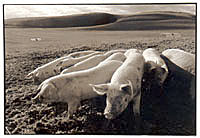
Free-range pigs (Christine Thery)
-- "Use your own pigs, or borrow a neighbour's, to dig beds for you and to manure your land. Keep them in a moveable pen. Put them where you want your beds to be made. Leave them there until they have dug and manured enough." -- People's Farming Workbook
-- "Pigs would make an excellent addition to a farm for pasture renovation. Pigs can be extremely rough on pasture. Why not use unrung pigs on poor pasture instead of a plow? Then just level and reseed. Fertility would be taken care of by rotational grazed pigs." -- Greg Gunthorp, pasture pork producer.
See: Fertility Farming by Newman Turner, Chapter 17. Pigs and Poultry on the Fertility Farm. "In the building up of fertility, especially on the poor light-land farm, there is no animal more effective than the pig."
Raising pigs on soil in Japan
I've heard many organic farmers saying: "I'm doing organic farming without hoping to make a profit." Some complain: "The biggest dissatisfaction is that consumers always demand cheap products. They don't think of the farmers who grow their food." But I finally found one young farmer who stated clearly: "I decided on organic farming because I want to make money." He was a 27-year-old pig farmer.
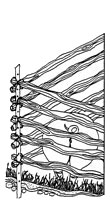 "You have to raise healthy pigs to make money," he said. "You can't raise healthy pigs on the artificial feeds on the market, and vets just inject lots of medicine when the pigs get sick. I don't want to eat such a pig -- and pigs don't become healthy with the medicines either. There are thousands of anti-fungicides and antibiotics in artificial pig feed. I can't let my pigs eat such stuff! The best food for healthy pigs is healthy soil."
"You have to raise healthy pigs to make money," he said. "You can't raise healthy pigs on the artificial feeds on the market, and vets just inject lots of medicine when the pigs get sick. I don't want to eat such a pig -- and pigs don't become healthy with the medicines either. There are thousands of anti-fungicides and antibiotics in artificial pig feed. I can't let my pigs eat such stuff! The best food for healthy pigs is healthy soil."
The Ministry of Agriculture and Forestry in Japan says 65% of pigs sent to abattoirs are sick. The Department of Agriculture in the US reported that only half the piglets survive. Vets and scientists have concentrated on eradicating disease with new treatments, vaccinations, new antibiotics, but still, half the piglets die. So medicine couldn't solve the basic problem, and half the piglets die in protest.
A farmer in England reported: "If you confine pigs inside, many piglets will get diarrhoea [white scour]. I feed these sick piglets plenty of fresh soil full of humus, which contains no chemical fertilizers. I've proved that piglets stay healthy when they eat soil. You should start feeding piglets healthy soil when they're one week old, and continue until they're six weeks old. You'll be surprised how much soil piglets eat! The interesting thing is that it's no use at all feeding them chemically fertilised soil." [From "The Living Soil" by Lady Eve B. Balfour, Faber & Faber, London, 1943 -- see below.]
It seems the young farmer I met had done his homework. I had heard that soil is good for pigs, but I'd never actually seen such a pig. So I decided to visit him at his farm in the mountains.
He and his wife built their farmhouse themselves, using old wood thrown away a few years previously when it was a trend to build a new house. The couple met when he was 24, but their parents opposed the marriage, so they left their families and built their first house by themselves. An architect friend helped them with the structure, and they learnt basic construction techniques from him. Later they built pig housing on their own. His wife can even do welding.
The road to the house was untarred, red mountain soil, but there was plenty of rich black soil in the field in front of the pig pens. The farmer chased the pigs out of the house onto the field.
"It was just a mountain area full of trees and grass here," he said. "We set up electric fences around the field, but you only need to turn it on a couple of times. Pigs are smart and learn quickly, they won't try to escape after that."
Several pigs began digging in the soil with their noses. "Oh, this field was ploughed by pigs?" I asked.
"Yes. It was full of trees and grass, so first they ate grass, then they ate the grass roots and tree roots, and the trees fell down by themselves. You can see the timber over there," the farmer told me. There were piles of timber outside the fence, to be used for fuel wood.
A pig started urinating in front of me. Such a noise it made! The soil turned dark shining black with the pig's urine. Meanwhile, it was eating and digging in the soil all the time.
___"Well, less than half a year, I suppose," he said.
___"With such a small herd of pigs?"
___"The pigs do their job until they become pregnant. When they are pregnant, they stay in the house," he said.
___"How long?"
___"Three to four months."
___"How long has this place been ploughed by pigs altogether?"
___"About one and a half years. It's ploughed too much already, so I'm thinking to move to the next field," he said.
I hadn't imagined pigs' snouts could do such a job better than tractors. "It's a 'bull-ton-zer'," I said ("ton" means pig). The farmer laughed at my silly joke. He told me that costs are low farming pigs this way, and the pigs grow happily and healthily with plenty of exercise and lots of sunshine. Sows give birth to about 10 piglets twice a year.
"If you feed them soil, there are no weak or deformed piglets. Everything is so economical. Of course, you can only use the mountain soil nowadays."
Only the mountain soils are safe for pigs, most other soil is now too polluted.Lady Eve's pigs
"I have made many experiments in connection with the curing and prevention of this trouble. From the turf remedy I tried experiments with ordinary soil from arable fields. It was not long before I found that soil gathered from a field rich in humus, where no chemicals had been applied, was quite as effective as turf, curing the pigs within forty-eight hours. Whereas soil from exhausted land, or land treated with chemicals, had no effect in curing the disease. I also noticed that young pigs running in the open on good pasture, provided it was not too hard for them to rootle (as, for instance, in hard frost, or very prolonged drought), never suffered from this disorder. It is never a menace to my herd now under any conditions, even in long spells of severe winter weather, when the ground is covered with snow, and the pigs have to be entirely housed up. Under such conditions I no longer wait for the first sign of scour, but regularly collect the soil of fresh mole hills, newly thrown up above the snow, on land I know to be fertile. Collected daily, this soil is friable in the hardest frost, and is equally good in very wet weather, for it is never sticky. The pigs eat it voraciously in incredible quantities, starting when about a week old. I sometimes add a little chalk to it, which the pigs seem to like."
"The Living Soil" by Lady Eve B. Balfour, Faber & Faber, London, 1943
http://www.soilandhealth.org/
See also:
Pasture
Poultry for small farms
Farming with animalsPigs on pasture
Pastured Pigs -- Greg Gunthorp of Indiana is a fourth-generation pasture pork producer. This is what he says about the confinement hog industry: "Every problem that buildings create could be cured by pasture. I know because I have a partially slatted building that sets empty because I can't afford the death loss in it!" And about vet bills: "Medication on pasture operations is a waste of good money. You can't lower an almost 0% death loss from weaning to market." And: "I don't vaccinate little pigs. I don't give them any shots. I don't clip teeth. I don't give iron shots. My death loss is non-existent."
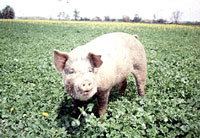
A happy pig at Greg Gunthorp's farm in Indiana
Hogs just might be the ideal grazers: Pastures and pens beat crates and confinement, from The New Farm, Sept/Oct. 1992 p. 19-23 -- Iowa farmer Tom Frantzen raises pigs on intensively managed pasture and cuts feed costs by half or more.
http://www.awionline.org/farm/frantzen.html
Pastured Pigs Discussion Group. Email mailing list for the exchange of ideas about raising pigs on pasture.

Hog Production Alternatives, ATTRA, 2004
http://www.attra.org/attra-pub/Hogs.html
Subscribe: PasturedPigs-subscribe@yahoogroups.com
List url: http://groups.yahoo.com/group/
PasturedPigs
Message archive, with search:
http://groups.yahoo.com/group/
PasturedPigs/messages
Forages for Swine -- Some useful advice from the Agronomy and Animal Siences Departments at the University of Missouri-Columbia, recalling that pasture was formerly an absolute essential for a successful swine operation. "Use of good pasture containing alfalfa, ladino clover, and grass can lower sow feed costs, help maintain high level reproductive capacity of boars, and in many cases increase litter size as compared to confinement raising."
http://muextension.missouri.edu/xplor/agguides/ansci/g02360.htm
Hogs in the Garden: Joel Orcutt keeps his garden in better shape with less effort by using "hog tractors" as ploughs -- and raising pigs for the market at the same time. This is what pigs were made for, not to have rings in their noses. Clear, concise how-to.
http://www.ottermoon.com/articles.php?lng=en&pg=114&prt=1
"Understanding Swine Production" by Vernon M. Meyer, Douglas Henderson, Understanding Technology Series, Technical Paper # 39, Volunteers in Technical Assistance (VITA), 1985 -- Good overview of pork production, main focus on small-scale, comparing pasture with confinement systems. Understanding Technology Series. Full text online at CD3WD 3rd World Development online library:
http://www.cd3wd.com/cd3wd_40/vita/pigs/en/pigs.htm
The Kunekune is a cute and friendly little pig from New Zealand, smaller than other pigs and with one other big difference -- they're grass eaters. A Kunekune is quite happy eating grass alone: you can use them as a lawnmower, and unlike other pigs, they won't harm trees or shrubs. If you don't have grass or an orchard to graze them in, household scraps will do.
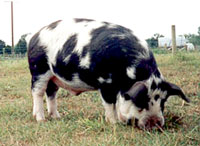
Kunekune (Katie Rigby) Great for smallholders or backyard farmers, high-quality meat.
Great for smallholders or backyard farmers, high-quality meat.
http://www.ansi.okstate.edu/breeds/
swine/kunekune/index.htm
Pigfeed from water hyacinth: "Boiled water hyacinth is used in Southeast Asia as a feed for pigs. The plants are chopped and sometimes mixed with other vegetable wastes, such as banana stems, and boiled slowly for a few hours until the ingredients turn into a paste, to which oil cake, rice bran and sometimes maize and salt are added. The cooked mixture is good for only three days, after which it turns sour. A common formula is 40 kg of water hyacinth, 15 kg of rice bran, 2.5 kg of fish meal and 5 kg of coconut meal." -- from "Water hyacinth, million dollar weed".Pig resources
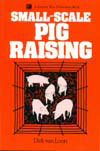 "Small-Scale Pig Raising" by Dirk van Loon, 1978, 1985, Storey, 273 pages
"Small-Scale Pig Raising" by Dirk van Loon, 1978, 1985, Storey, 273 pages
Explains why raising a feeder pig is the best bet for someone with little land who wants to produce the most meat for the smallest investment of time and money. Covers everything from buying a pig to smoking your own bacon. "In writing this book I have tried to create the kind of how-to and why guide I wish I'd had when we first raised pigs." For beginners, but goes further and deeper than most introductory books. History, swine management practises through the centuries, home butchering, with step-by-step instructions and many photos covering the entire process from slaughtering to portioning meat for the freezer. Download free from the CD3WD online library (19.8Mb pdf):
http://www.fastonline.org/CD3WD_40/JF/415/05-254.pdf
Buy the book at Amazon.com: Small Scale Pig Raising
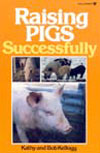 "Raising Pigs Successfully" by Kathy and Bob Kellogg, Williamson Publishing, 1985, ISBN-10: 0913589152, 192 pages
"Raising Pigs Successfully" by Kathy and Bob Kellogg, Williamson Publishing, 1985, ISBN-10: 0913589152, 192 pages
Home pork production could be the easiest (and most delicious) way to put meat on your table for pennies a day. It's easy, inexpensive and fun. Covers everything the home hog raiser needs to know with plenty of innovative ideas. Choosing best breeds, piglets, housing and pens, daily care and maintenance, feeds, water, troubleshooting, basic breeding, slaughtering, freezing and packaging, includes biogas production from swine manure. Buy at Amazon.com: Raising Pigs Successfully
 "Harris on the Pig: Practical Hints for the Pig Farmer" by Joseph Harris, Noel Perrin, 1999, Lyons Press, ISBN 1558219781
"Harris on the Pig: Practical Hints for the Pig Farmer" by Joseph Harris, Noel Perrin, 1999, Lyons Press, ISBN 1558219781
One of the handy Farm Devices series of reprinted books from the turn of the century. These books give modern readers a peak into history, showing how previous generations did it. They are absolutely practical today for anyone looking for alternative ways of doing things or those trying to use appropriate technology. Includes a comprehensive introduction to various breeds of pigs, a common-sense approach to feeding, step-by-step instruction on building piggeries and pens, plus dozens of other useful lessons, all leavened with a healthy dose of humor. Gems of knowledge abound -- a veritable swine bible. Well-illustrated with original line art and engravings. Full text online at Cornell University's Core Historical Literature of Agriculture Library:
http://chla.library.cornell.edu/cgi/t/text/text-idx?c=chla;idno=2914263
Buy the book at Amazon.com: Harris on the Pig
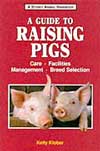 "Storey's Guide to Raising Pigs" by Kelly Klober, 1997, revised and updated, Storey Books, ISBN 1-58017-326-8
"Storey's Guide to Raising Pigs" by Kelly Klober, 1997, revised and updated, Storey Books, ISBN 1-58017-326-8
A practical and comprehensive guide for small-scale pig producers and those who want to keep a family pig. An easy to read text covering breeds, feeding, housing, health maintenance, disease prevention, breeding, butchering, fitting and showing, and pig raising as a business. Buy at Amazon.com: Storey's Guide to Raising Pigs
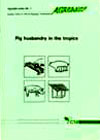 "Pig Husbandry in the Tropics", 1996, Agrodok Publications, Agromisa
"Pig Husbandry in the Tropics", 1996, Agrodok Publications, Agromisa
This Agrodok series booklet by Agromisa, a Dutch non-profit group, is simple, practical and detailed. Pigs are found everywhere, often kept by peasants, but methods and function differ widely. For women (and children), pig keeping can be of great importance as an independent economic activity yielding cash which is used directly within the family. Describes three pig keeping systems in developing countries. Covers improvements in housing, reproduction and feeding methods and in preventing and treating diseases, with a blueprint for small-scale commercial pig keeping for developing countries, with variations according to local need. Also covers scavenging (untethered) pigs and tethered pigs, and uses of liquid manure and dung. Download pdf here.
Small farms
Small farm resources
Community-supported farms
Farming with trees
Farming with animals
Pasture
Pigs for small farms
Poultry for small farms
Aquaculture for small farms
Composting for small farms
Controlling weeds and pests
Small farms library
City farms
Organic gardening
Building a square foot garden
Plant spacing guides
No ground? Use containers
When to sow what
Seeds
Garden pond
Gardening resources
Composting
Making compost
Composting resources
Composting indoors
Vermicomposting
Humanure
Composting for small farms